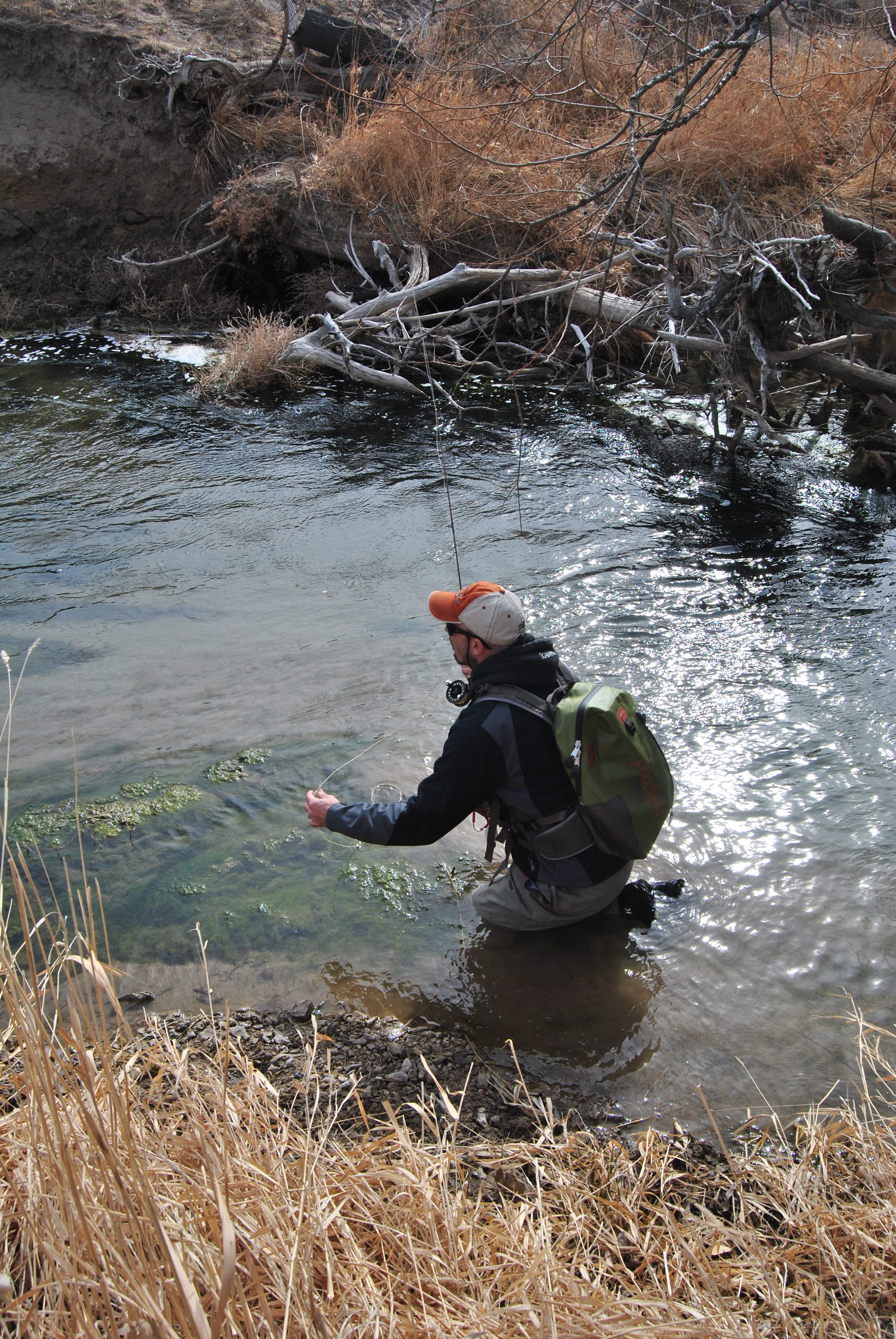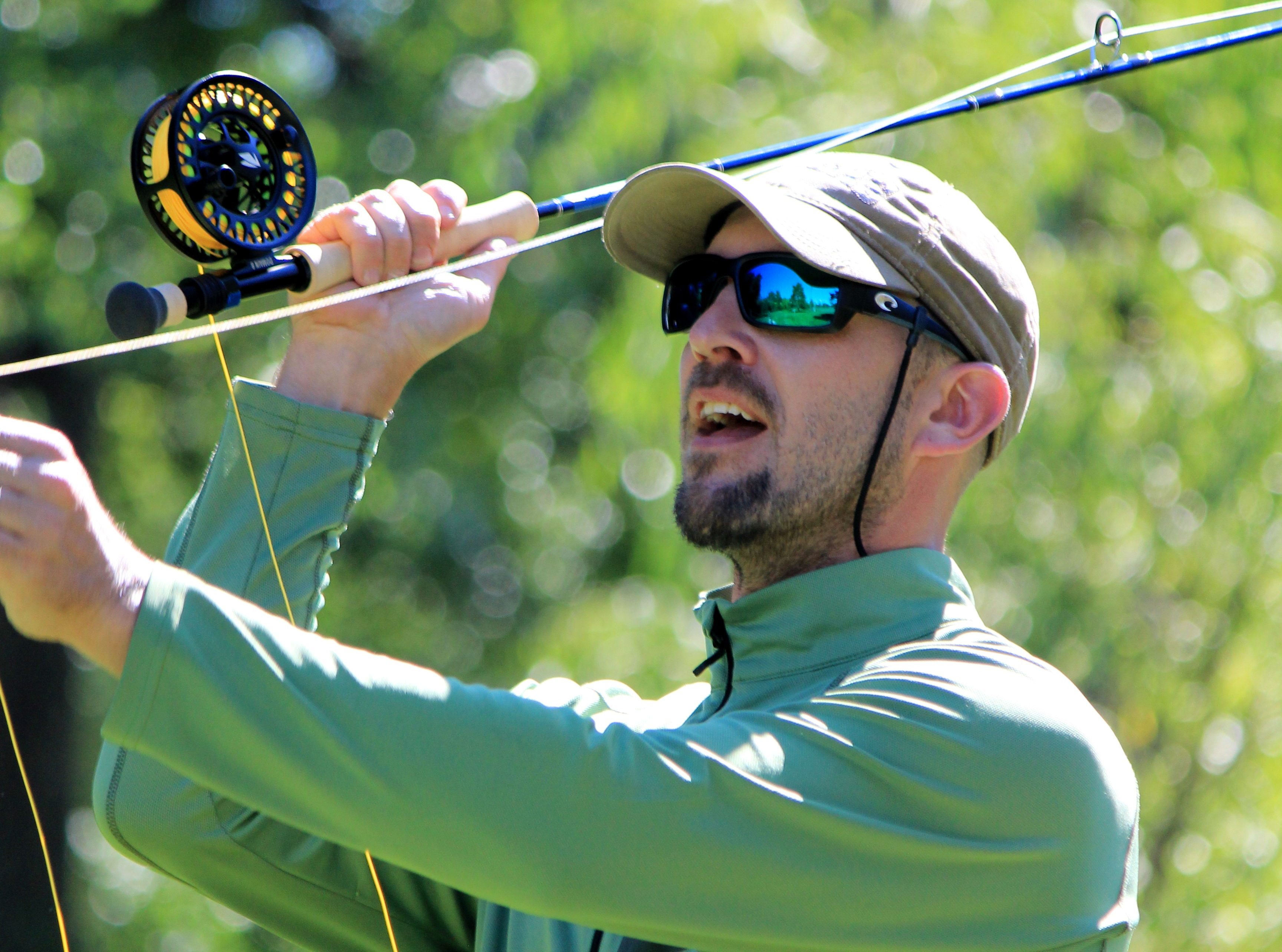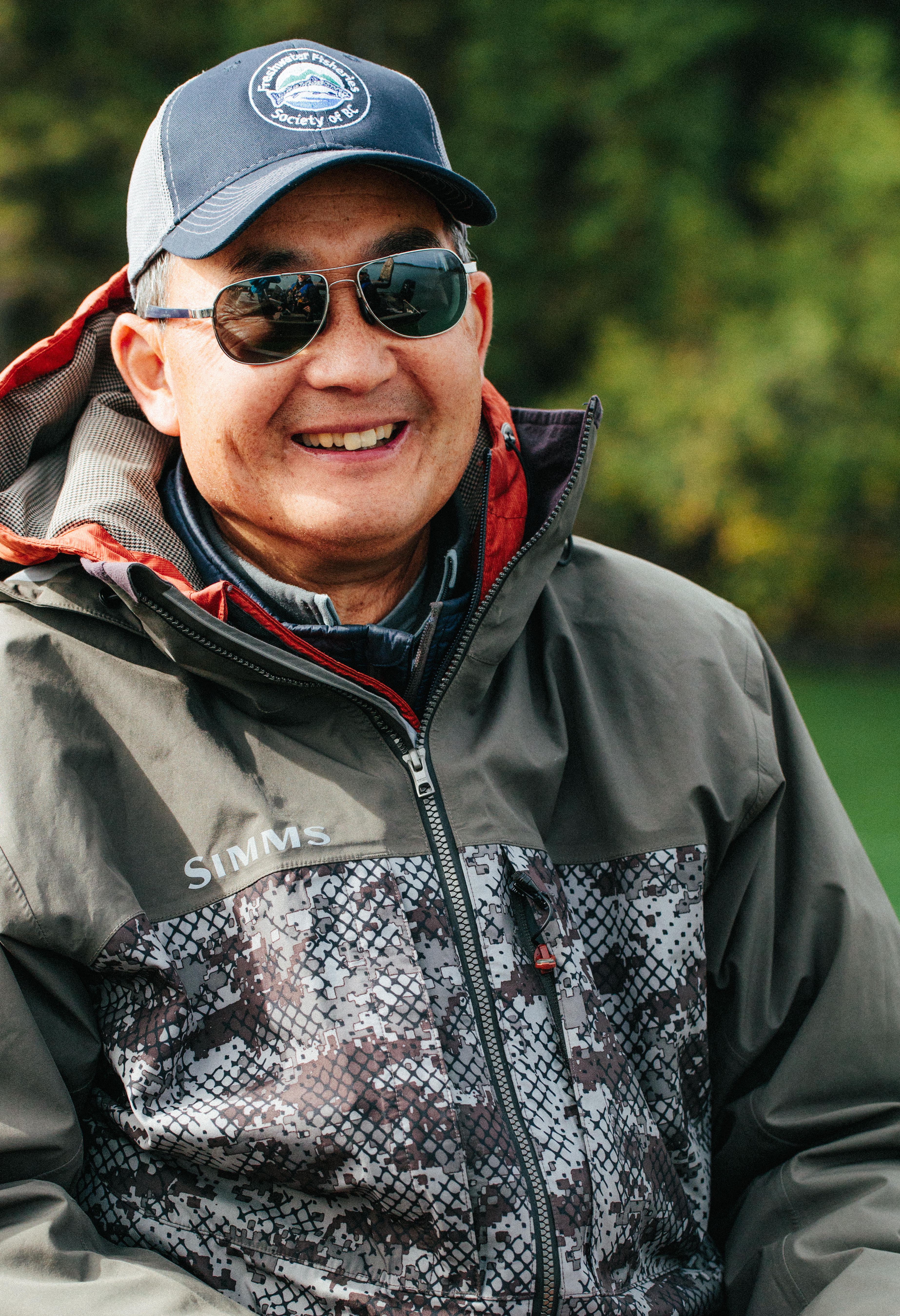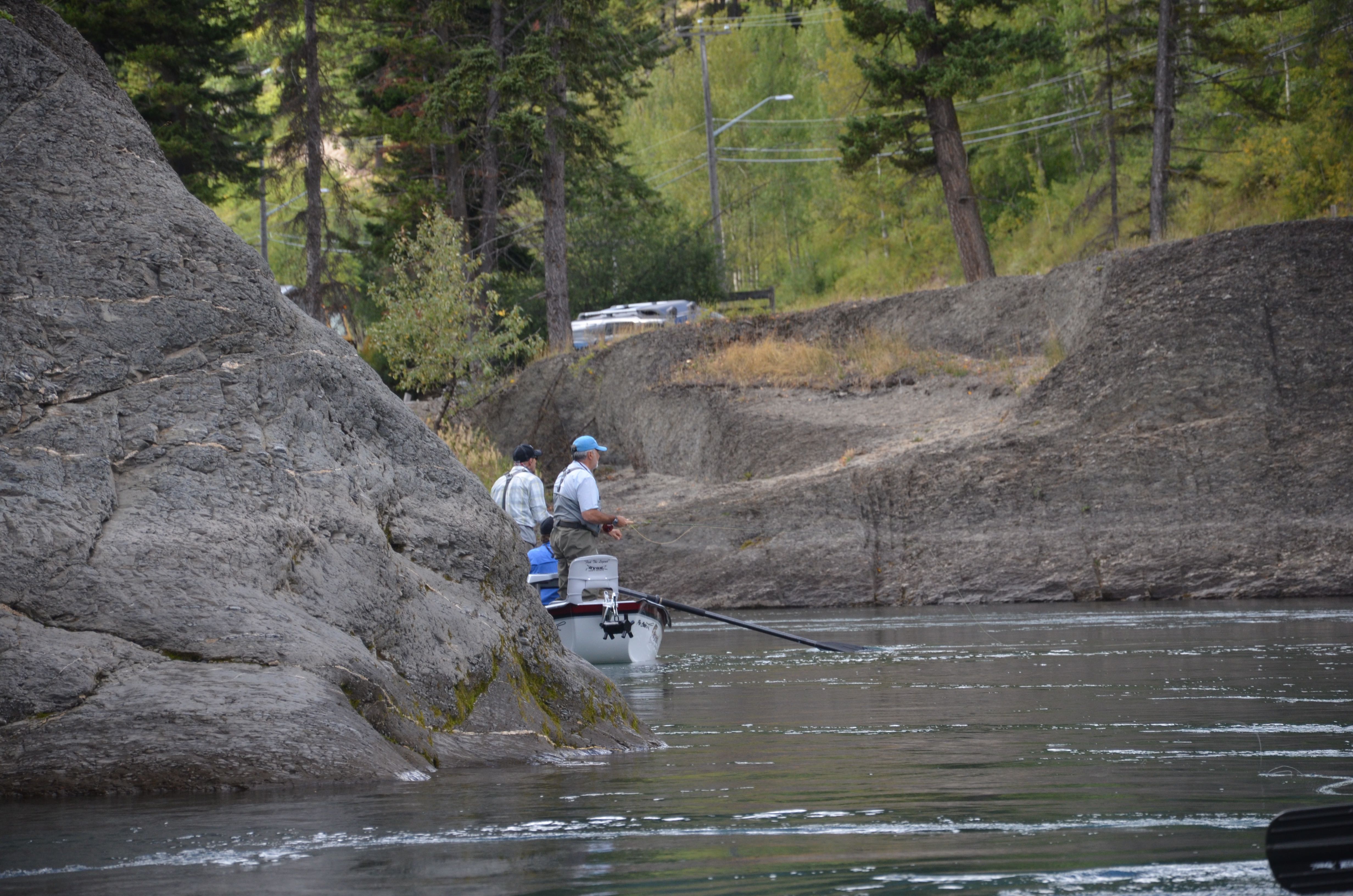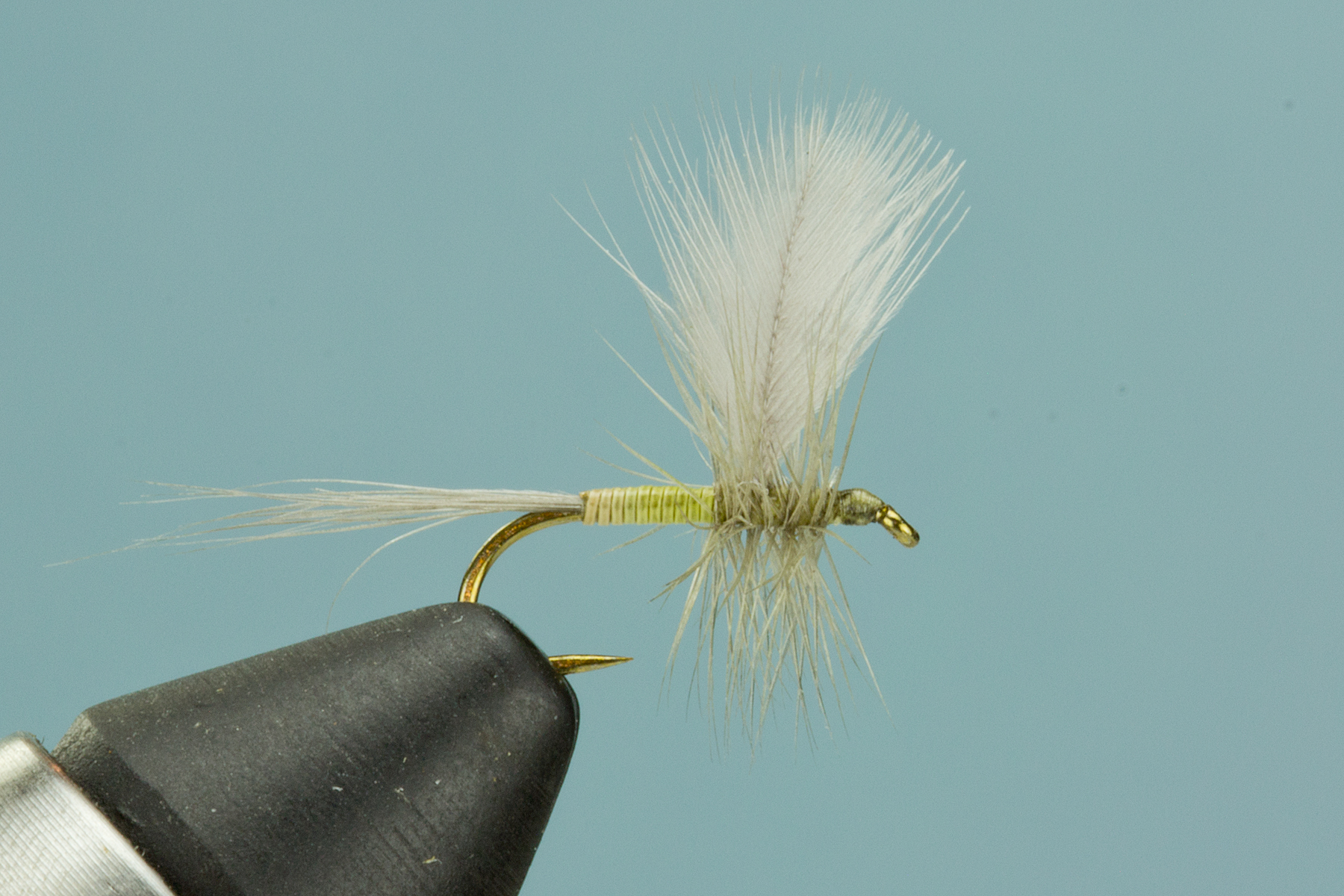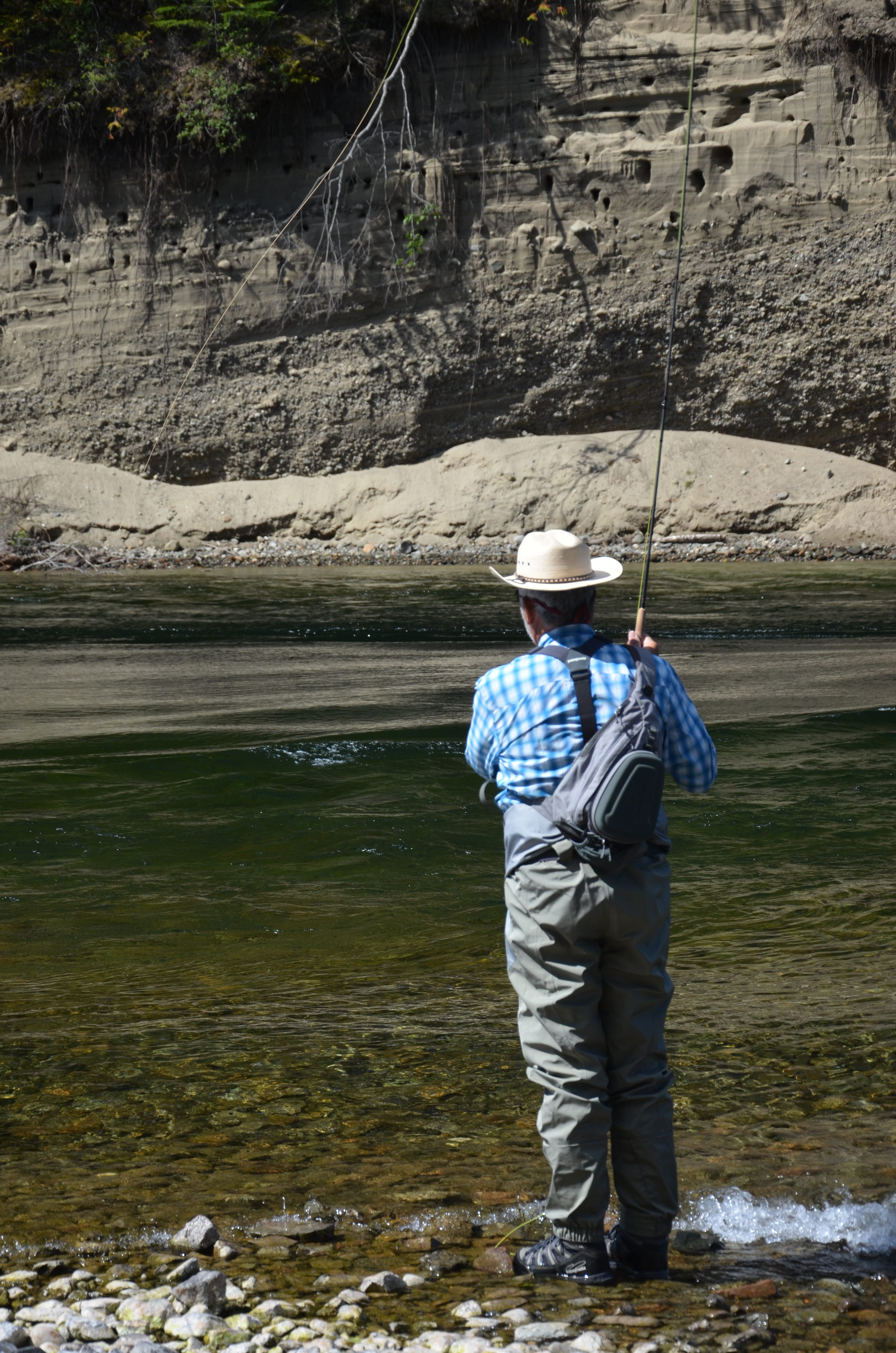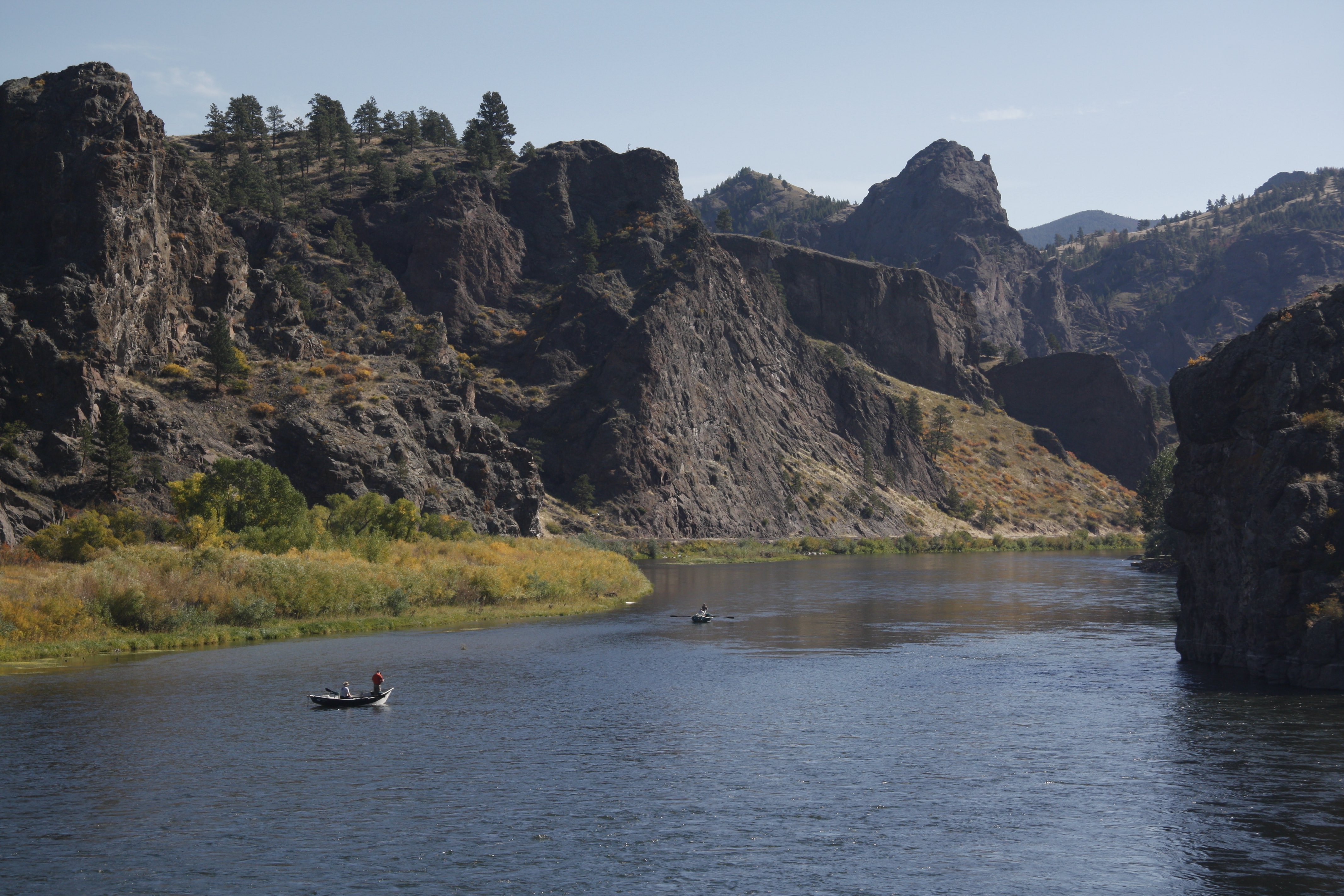The best Trico fishing comes in the heaviest spinner falls and those occur on the best Trico-days, which are those that begin with bright, warm, calm mornings. Cooler weather delays or severely reduces the intensity of the spinner fall, and wind can blow the spinners away from the river.
As summer progresses the spinner fall occurs later and later in the morning. When the hatch begins in mid-July or early August, spinners might be on the water by 8:00 am. Around Labour Day it might occur around 10:00, and by late September it could be noon before spinners come down. All these times are subject to weather, and particularly air-temperature variations.
When the flies are thick on the surface, the fish like to hold in shallow water along the stream banks, or just beneath the surface in slightly deeper water midstream. They find a lane of slow, steady current that delivers lots of flies and rise subtly, but frequently, making the most of an easy meal.
Jim McLennan, Managing Editor
